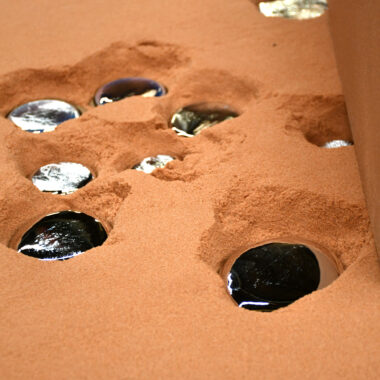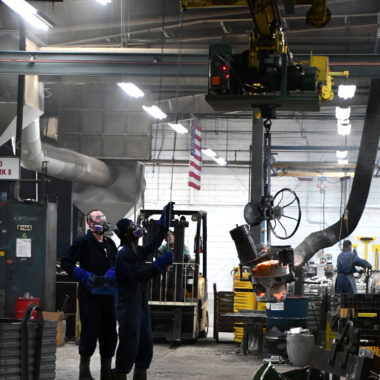Unraveling About Aluminum Casting: From Basics to Proficiency
Wiki Article
Opening the Potential of Light Weight Aluminum Casting: Proven Techniques for Success
Light weight aluminum spreading has actually long been recognized for its adaptability and prevalent applications across various markets. Join us as we discover the essential elements that can drive light weight aluminum spreading towards unrivaled success in today's affordable market landscape.Benefits of Light Weight Aluminum Spreading
Light weight aluminum spreading offers a wide range of advantages that make it a favored option in various industrial applications. One of the main benefits of light weight aluminum spreading is its light-weight nature, which adds to sustain effectiveness in sectors such as auto and aerospace. In addition, light weight aluminum is very flexible, permitting for intricate and complex forms to be conveniently generated via spreading procedures. This adaptability in style is a considerable advantage for industries that require components with specific geometries.In addition, light weight aluminum casting offers outstanding corrosion resistance, making it ideal for applications where direct exposure to extreme atmospheres is a concern. The product likewise exhibits excellent thermal conductivity, which is useful for industries calling for warm dissipation, such as electronics (about aluminum casting). Aluminum is completely recyclable, aligning with the expanding emphasis on sustainable techniques in contemporary production.
Style Factors To Consider for Casting
The style stage plays a critical function in the general success of a light weight aluminum spreading project. One essential factor to consider is the option of appropriate geometries and features that assist in the spreading procedure.Furthermore, considerations associated with parting lines, gating systems, and risers are important to protect against defects like porosity and shrinkage. It is important to enhance the layout for reliable product use and decrease post-processing requirements. Simulations and prototyping can be valuable tools in assessing and fine-tuning the casting style before full-scale production.
Partnership between design producers, engineers, and shops is vital to attend to any type of prospective difficulties early in the design phase. By including these factors to consider right into the casting design procedure, makers can improve product quality, lower expenses, and ultimately unlock the complete capacity of aluminum spreading.
Enhancing Casting Effectiveness
Creating with a concentrate on optimizing product flow and decreasing problems is important when intending to enhance casting performance in aluminum spreading projects. To attain this, utilizing simulation software program can help in determining possible issues prior to the spreading process begins. By imitating the flow of molten light weight aluminum, designers can readjust gating and riser designs to make sure correct filling and solidification, eventually lowering the occurrence of problems such as porosity or contraction.
Moreover, executing appropriate warmth therapy processes can enhance the general spreading performance. Heat treatment can assist enhance the mechanical you can try these out residential or commercial properties of the aluminum casting, making sure that the last part meets the required specifications. Furthermore, utilizing automation and robotics in the spreading procedure can enhance manufacturing, lower manual work, and increase overall efficiency.
Additionally, continuous tracking and high quality control during the casting procedure are essential for determining any type of variances and making sure that the end products satisfy the preferred requirements. By executing these techniques, producers can enhance casting efficiency, boost item high quality, and eventually accomplish greater success in light weight aluminum spreading tasks.
High Quality Control in Aluminum Casting

Efficient high quality control techniques play a critical function in ensuring the precision and dependability of light weight aluminum casting processes. Quality assurance actions in aluminum casting include a variety of tasks aimed at supporting details standards and identifying variances that can endanger the end product. These practices begin with the cautious option and examination of raw materials to guarantee their high quality and suitability for the spreading procedure. Surveillance and regulating the criteria of the spreading procedure itself, such as stress, temperature level, and air conditioning prices, are vital additional reading action in preserving uniformity and stability in the final products.
In enhancement to procedure control, quality control in light weight aluminum spreading involves extensive screening and evaluation treatments at numerous stages of production. By applying robust quality control methods, light weight aluminum casting facilities can provide items that fulfill customer expectations for integrity, quality, and performance.
Maximizing Success
To achieve optimum economic performance, an extensive strategy for making best use of productivity within light weight aluminum casting procedures need to be carefully devised and implemented. One crucial aspect of making best use of earnings in aluminum spreading is enhancing manufacturing effectiveness.
In addition, expanding item offerings and checking out new markets can assist expand income streams. Understanding customer demands and market fads can lead calculated decisions to utilize on emerging chances. Investing in research and development to introduce items or processes can likewise drive success through differentiation and consumer contentment.
Final Thought
In conclusion, light weight aluminum spreading provides numerous benefits in regards to design resilience, adaptability, and cost-effectiveness. By meticulously taking into consideration design factors to consider, enhancing casting performance, executing quality assurance procedures, and taking full advantage of productivity, makers can open the full possibility of aluminum spreading. This versatile and trustworthy procedure has confirmed to be a successful option for a large range of commercial applications.Additionally, light weight aluminum is highly malleable, permitting for intricate and complicated forms to be conveniently produced with spreading procedures.Efficient high quality control techniques play a pivotal role in making sure the accuracy and reliability of aluminum spreading procedures.In addition to process control, high quality control in light weight aluminum spreading entails rigorous testing and assessment treatments at various stages of production. By carrying out durable quality control methods, light weight Check Out Your URL aluminum spreading centers can deliver products that satisfy client assumptions for efficiency, top quality, and reliability.
By carefully considering design considerations, enhancing casting efficiency, implementing quality control actions, and making the most of success, producers can unlock the complete possibility of aluminum casting.
Report this wiki page